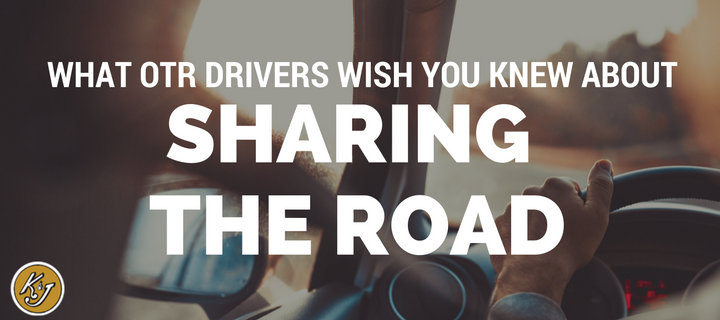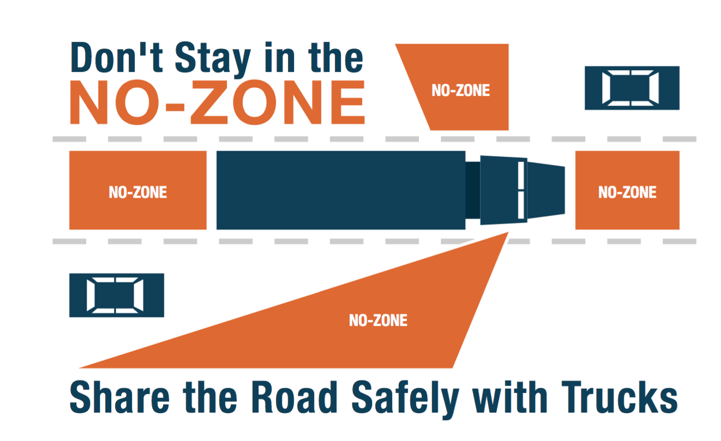What OTR Drivers Wish You Knew About Sharing the Road

Sharing the road isn't easy. Everyone is trying to get to their destination in a timely manner. And that means that frustrations are natural. Here is a list of a few things OTR drivers wish that others knew about sharing the road. We guarantee that following these suggestions will lead to many happy truckers and safe four-wheelers!
Expect trucks to take wide turns.
When OTR drivers take wide turns this isn't because they are jerks. Turning a big rig is harder than turning a car or small truck. They need extra room to turn. They often take up more than one lane; expect this and give them the room they need.
They can't stop their truck on a dime.
The space in front of their truck isn’t for their safety, it is for yours. Don't cut off a truck, and don't slam on your brakes right in front of a truck and expect a good outcome. This is not because they aren't paying attention, but because they literally cannot stop that quickly.
You don’t fight a train, don’t fight a truck.
We commonly hear this, "But don't trucks have 18 brakes and cars have 4? Shouldn't they be able to stop as well as a car?" Actually trucks have 10 brakes and, if the trailer is full, each of those brakes is expected to stop 8,000 pounds. Let that sink in.
Don’t hang out in a trucker's blind spots.
Here are three great quick tips to see if you are in a blind spot:
- If you can't see the driver's side mirrors they definitely can't see you.
- If you can't see the driver in their mirror they most likely can't see you.
- Never enter the area between a truck and the curb or shoulder if they have a turn signal on.
Don’t draft a truck.
There are plenty of websites out there showing how to draft a truck so you can save on fuel, but it is a horrible idea. Trucks can't see you when you are drafting them. You can't see what is coming in the road, and your response time is greatly diminished. To put it simply, drafting seems like a great idea until it isn’t.
Don’t hang out near a truck's tires.
Beyond being in the truck's blind spot, driving next to truck tires is especially dangerous. Good OTR drivers maintain their tires, but even well-maintained tires can pick up road debris that could come out into your lane quickly.; it is best to stay clear just in case this should happen.
Never pass on the right.
It is tempting when you are behind a slow truck, but don’t do it. And NEVER pass on the shoulder. Some OTR Drivers refer to those who pass on the right as suicide passing. Don't be a statistic, wait until it is safe to pass them legally.
Have patience.
Trucks lose speed going up hills. You would too if you weighed 80,000 pounds. Give them some grace and put your frustration in perspective. This truck could very well be carrying the food you will eat next week or the clothes you will buy your kids.
Most trucks have cameras.
In legal disputes it isn’t your word against theirs anymore. Most accidents with big rigs are caused by the driver's of the smaller vehicles. It always used to be one person's word against the other, but now that most trucks are equipped with cameras, if it comes down to a legal dispute, truck drivers often win. You wouldn't sit on a train track and expect to stay safe, so don't cut of a truck or drive recklessly and expect to stay safe either.
If you enjoyed this, check out our list of common misconceptions about OTR drivers!

